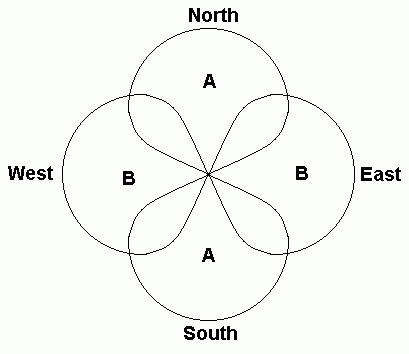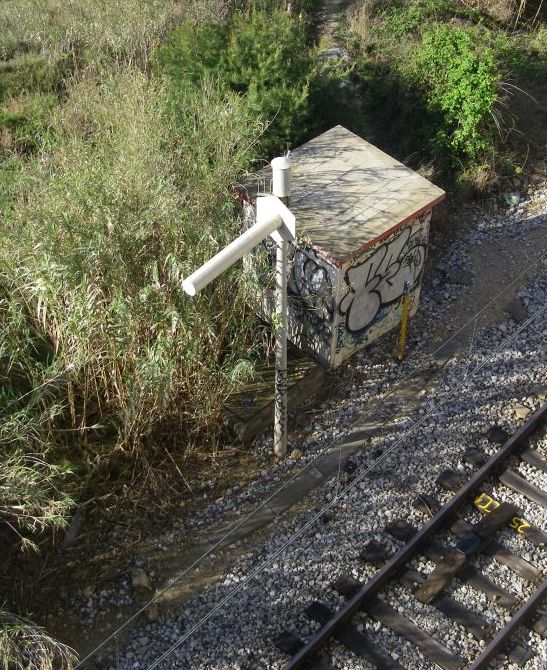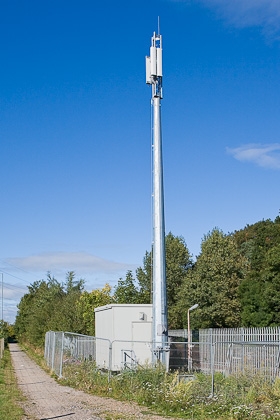
RANDOM PAGE
SITE SEARCH
LOG
IN
SIGN UP
HELP
To gain access to revision questions, please sign up and log in.
A2
aThe Technology

|
Mobile phone technology is advancing fast so parts of this page may quickly become out-of-date.
- Phones use radio waves ( Electromagnetic Radiation ) to connect to the base station.
- The phone contains both a transmitter and a receiver (transceiver). So does the base station.
- Mobile phones have a very short range depending on the terrain, only a few miles. Less in built-up areas.
- The photo shows a permanent phone mast with directional antennas dividing the 360 degree coverage into three zones.
Costs
- Voice calls are usually charged per minute.
- Text messages are charged per message.
- Data downloads are usually charged per megabyte.
- Phone contracts often include allowances for voice calls and text messages up to some limit without additional charges. Data is sometimes claimed to be unlimited unless you download too much.
- Pay as you go arrangements charge for everything but can be good value if you are not a heavy user. Some include generous data download allowances.
|
bCells
|
- Mobile phone base stations provide coverage for small geographical areas called cells.
- There are many base stations.
- When the signal in one cell becomes poor, the call is automatically switched to another cell.
- These cells overlap so areas without reception are becoming rarer.
- The base station uses many channels (eg 16).
cTime Division Multiplexing
- The base station also uses time division multiplexing on each channel.
- This allows several phones to use the same channel at the same time (eg 8).
- With 16 channels (one of which is used for administration) and 8 conversations per channel, (16 - 1) x 8 conversations are possible = 120. This is the sort of detail that is likely to become out-of-date as newer and improved systems come on-line.
- The base station channels have a bandwidth of 200 kHz.
- This is shared between the 8 conversations.
- Each conversation has access to 200 / 8 kHz of bandwidth = 25kHz per user.
- The data links are digital.
- Digital data compression is used to make more efficient use of the available bandwidth.
- Noise on the digital signal can be cleaned up using a regenerator.
- Data from the phone to the cell is called uplink data.
- Data from the cell to the phone is called downlink data.
- This is easy to remember for satellite phones as the uplink is up to the satellite. The same terminology is used for terrestrial phones.
- The phone gives the illusion of transmitting and receiving at the same time by means of time division multiplexing.
- The photo shows a cell with directional antennas aimed to cover a main road in both directions. This base station is portable although you'd need a crane to move it. Similar temporary base stations are used when there are large public gatherings like concerts or the Olympic games. They are used when the permanent infrastructure might get overloaded.
|
dFrequency Re-Use
eFrequency Division Multiplexing
- Each channel is on a slightly different (non overlapping) frequency.
- This is called frequency division multiplexing.
- Cells next to each other use different radio frequencies to prevent interference.
- Cells further apart can re-use the same frequencies because they are out of range so there will be no interference.
- The use of directional antennas enables the same frequency to be used more than once within a cell. The diagram below shows how. This is one cell with four directional antennas. Channel A can be used twice as can channel B.
- This is an example of Space Division Multiplexing (SDM). Satellite TV also uses SDM. There are horizontally and vertically polarised transmissions on the same frequency but kept separate by being picked up by different antennas.
|

|
fMicro-Cell
This image shows a highly directional circularly polarised mobile phone antenna pointing into a railway tunnel so travellers are not cut off when the train passes through. This is a nice example of a micro-cell covering a small area.
- Micro-cells are low power base stations that provide coverage where the terrain is difficult.
- Examples include underground railway stations and even tunnels in some cases.
- Femto-cells are even smaller cells for use inside buildings, often in a single room, where the normal signals are screened. These cells plug into a PC USB port and make use of the local wired broadband connection to provide phone and data services. These tiny base stations have already been miniaturised to a size not much bigger than a USB stick.
|

|
gSampling
When an analogue signal is converted to digital, it is measured or sampled at regular time intervals.
Sampling: The sampling rate must be at least twice the highest frequency being sampled. ( Nyquist Frequency )
Example:
- The highest audio frequency is 4000 Hz.
The sampling rate must be at least 8000 Hz.
If each sample is encoded as an 8 bit binary number, the bit rate is 8 x 8000 Hz = 64000 bits/second.
reviseOmatic V3
Contacts, ©, Cookies, Data Protection and Disclaimers
Hosted at linode.com, London




